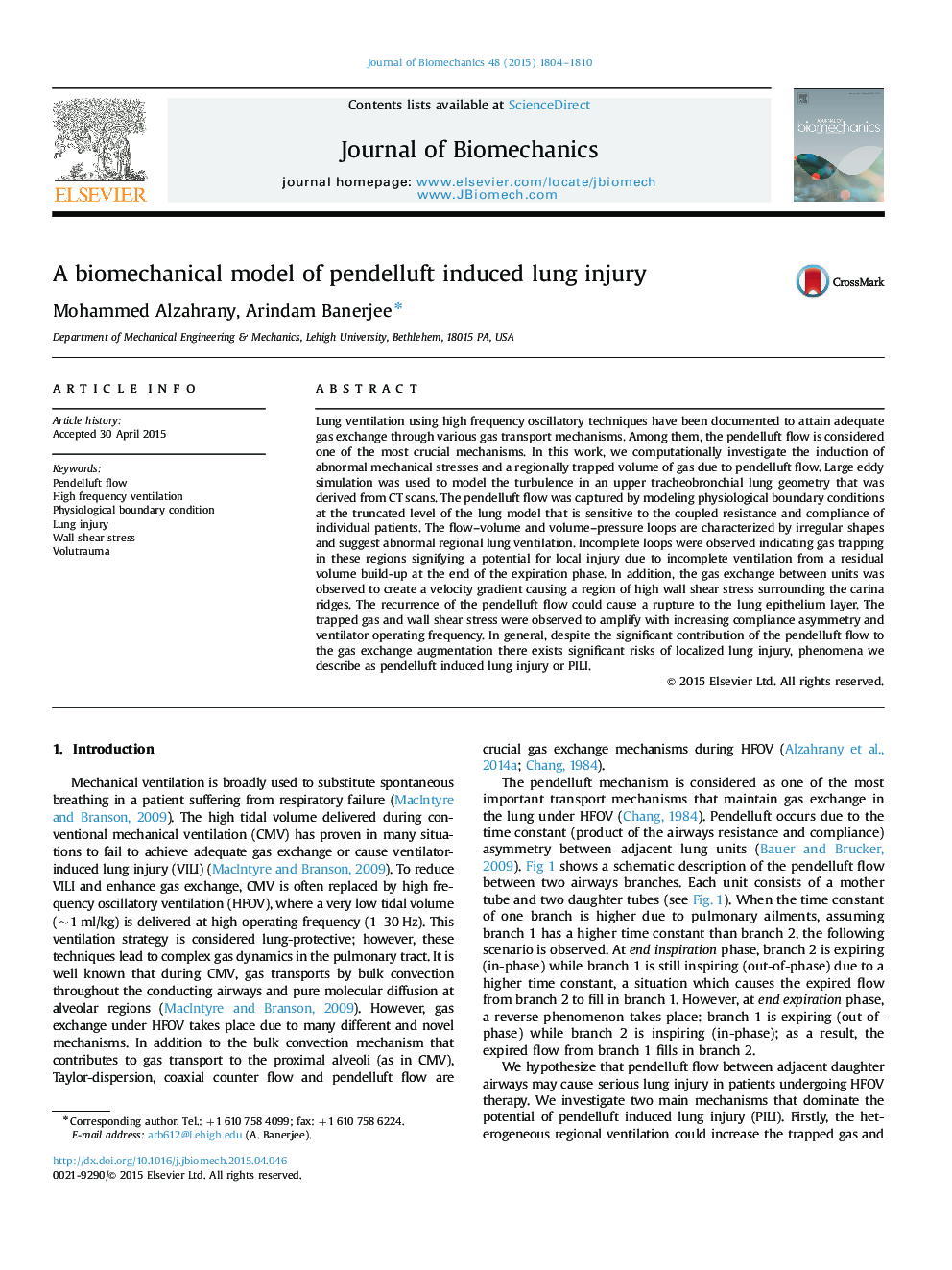| Article ID | Journal | Published Year | Pages | File Type |
|---|---|---|---|---|
| 10431390 | Journal of Biomechanics | 2015 | 7 Pages |
Abstract
Lung ventilation using high frequency oscillatory techniques have been documented to attain adequate gas exchange through various gas transport mechanisms. Among them, the pendelluft flow is considered one of the most crucial mechanisms. In this work, we computationally investigate the induction of abnormal mechanical stresses and a regionally trapped volume of gas due to pendelluft flow. Large eddy simulation was used to model the turbulence in an upper tracheobronchial lung geometry that was derived from CT scans. The pendelluft flow was captured by modeling physiological boundary conditions at the truncated level of the lung model that is sensitive to the coupled resistance and compliance of individual patients. The flow-volume and volume-pressure loops are characterized by irregular shapes and suggest abnormal regional lung ventilation. Incomplete loops were observed indicating gas trapping in these regions signifying a potential for local injury due to incomplete ventilation from a residual volume build-up at the end of the expiration phase. In addition, the gas exchange between units was observed to create a velocity gradient causing a region of high wall shear stress surrounding the carina ridges. The recurrence of the pendelluft flow could cause a rupture to the lung epithelium layer. The trapped gas and wall shear stress were observed to amplify with increasing compliance asymmetry and ventilator operating frequency. In general, despite the significant contribution of the pendelluft flow to the gas exchange augmentation there exists significant risks of localized lung injury, phenomena we describe as pendelluft induced lung injury or PILI.
Related Topics
Physical Sciences and Engineering
Engineering
Biomedical Engineering
Authors
Mohammed Alzahrany, Arindam Banerjee,
